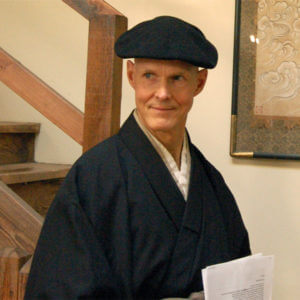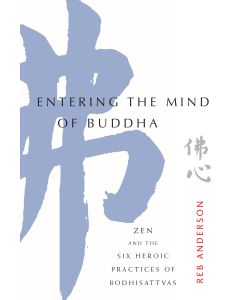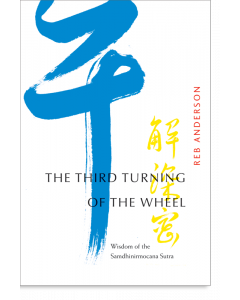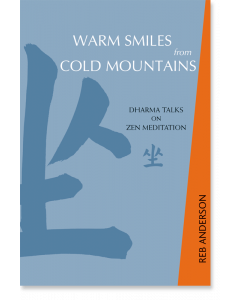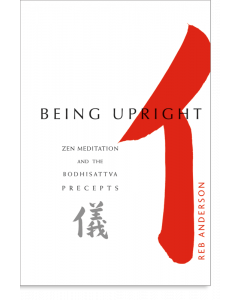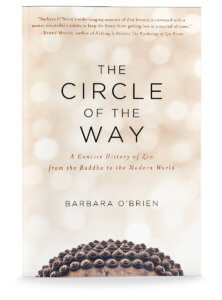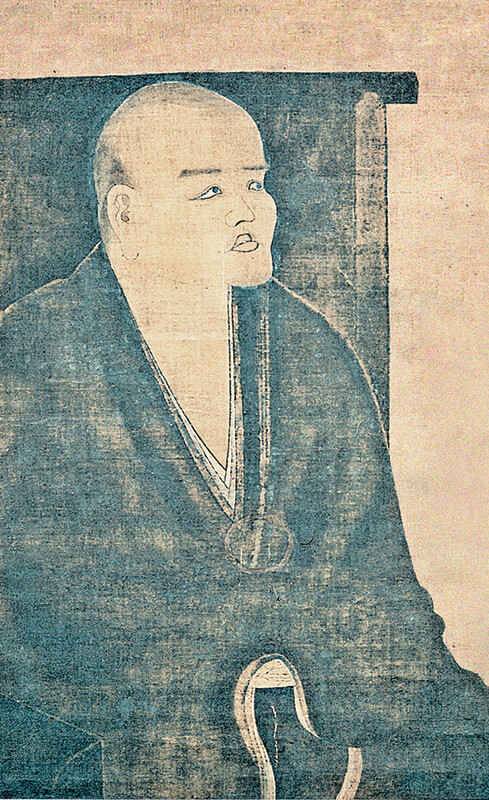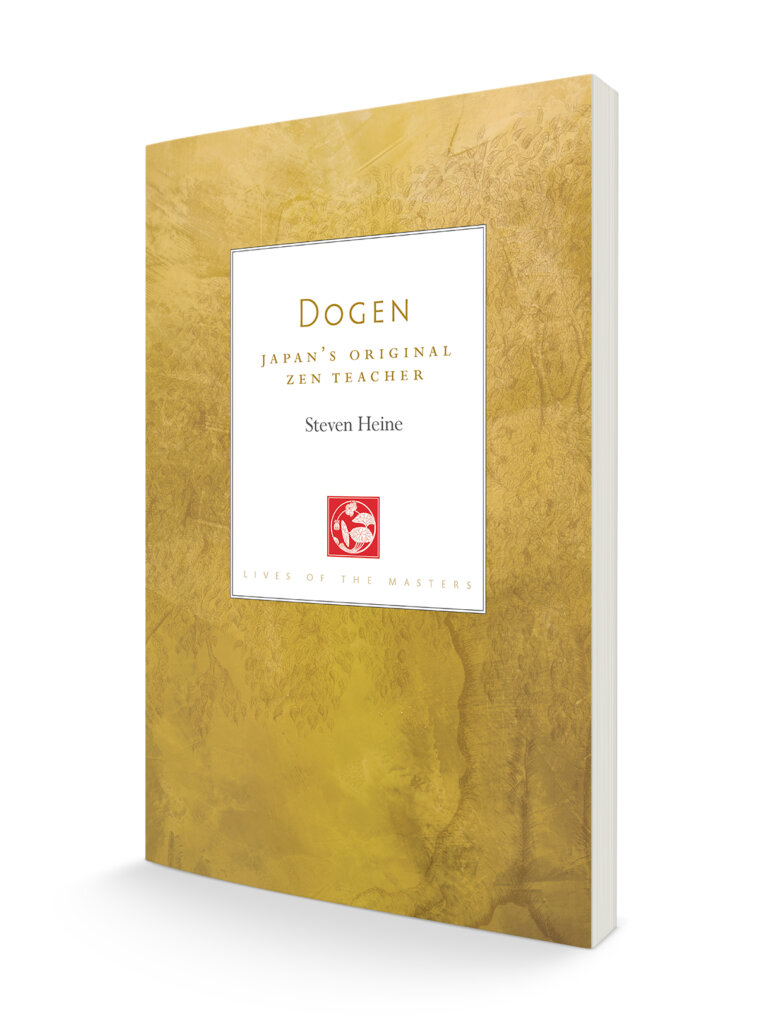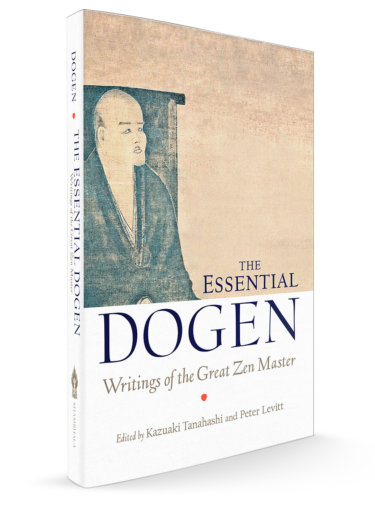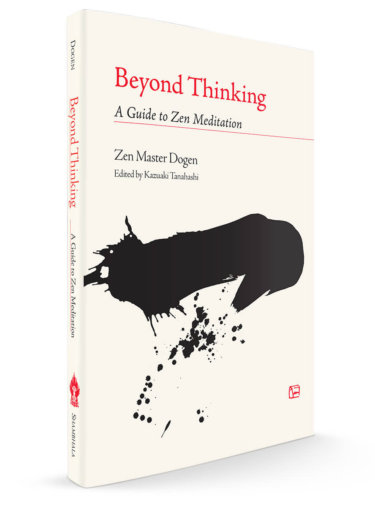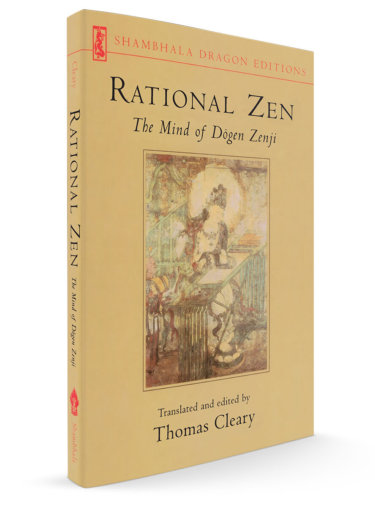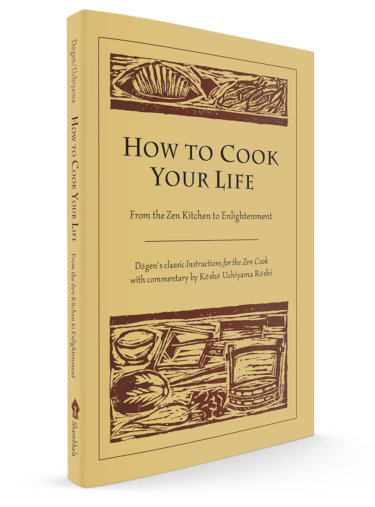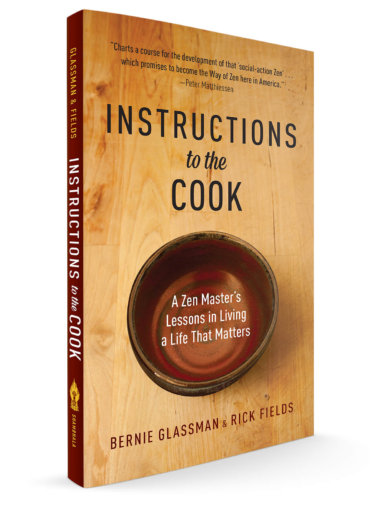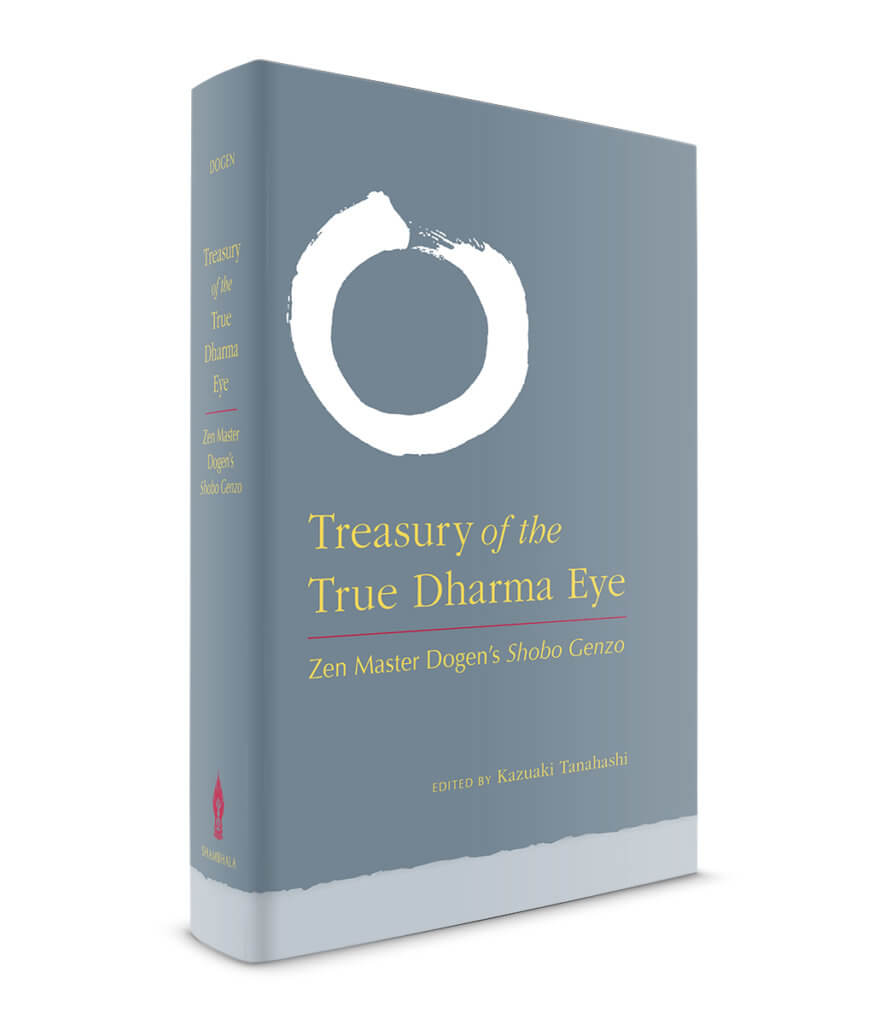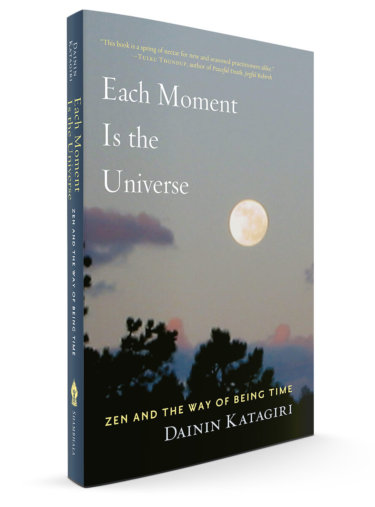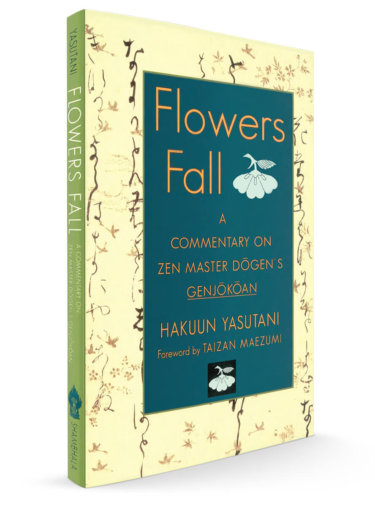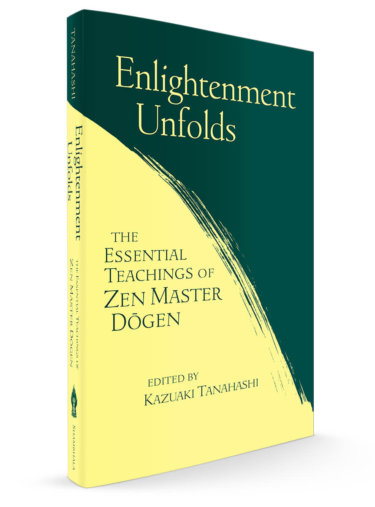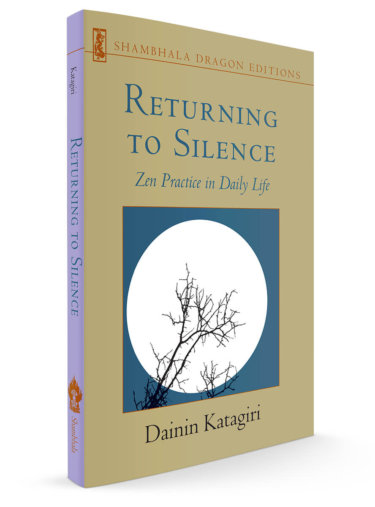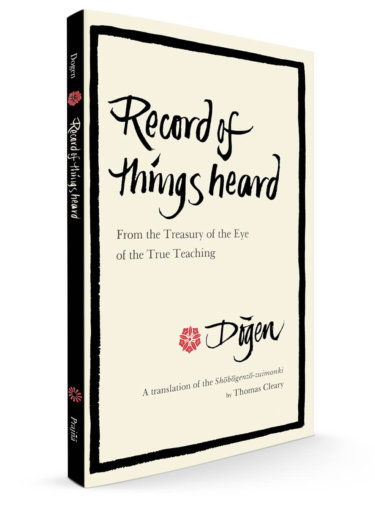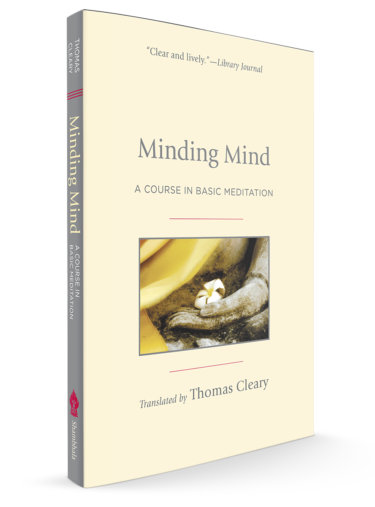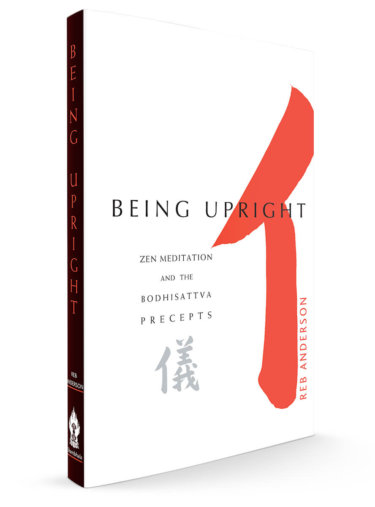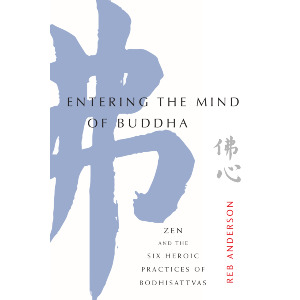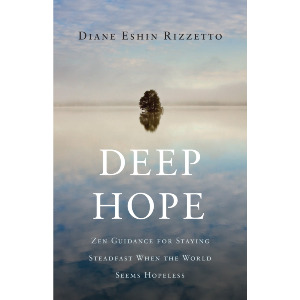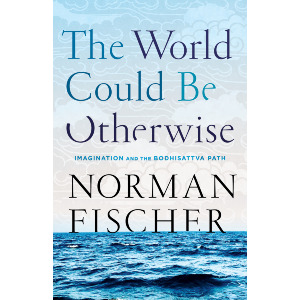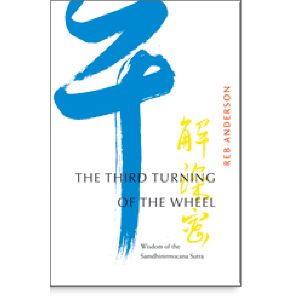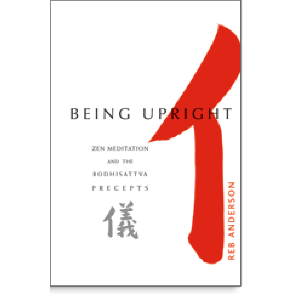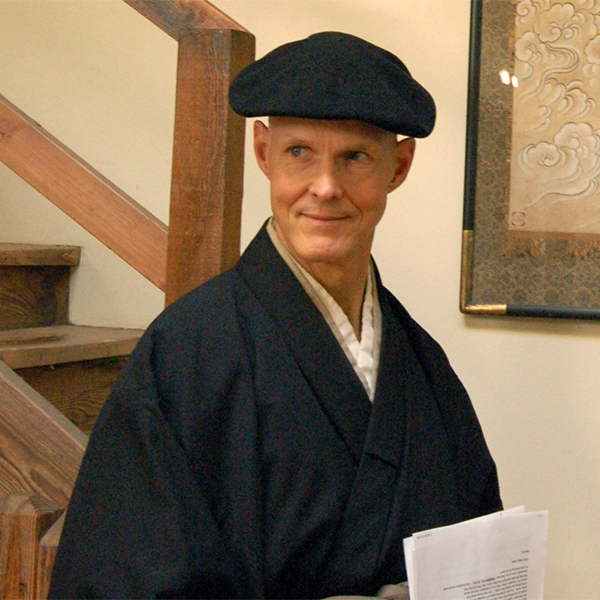

Reb Anderson
Reb Anderson moved to San Francisco from Minnesota in 1967 to study Zen Buddhism with Shunryu Suzuki Roshi, who ordained him as a priest in 1970. Since then, Reb has continued to study at San Francisco Zen Center, which includes Beginner's Mind Temple at The City Center (San Francisco), Green Dragon Temple at Green Gulch Farm (near Muir Beach, California), and Zen Mind Temple (Carmel Valley, California). Reb served as abbot from 1986 to 1995 and is now a senior dharma teacher.
He lives with his family and friends at Green Gulch Farm, where he teaches, lectures, and leads practice periods.
Reb Anderson
Reb Anderson moved to San Francisco from Minnesota in 1967 to study Zen Buddhism with Shunryu Suzuki Roshi, who ordained him as a priest in 1970. Since then, Reb has continued to study at San Francisco Zen Center, which includes Beginner's Mind Temple at The City Center (San Francisco), Green Dragon Temple at Green Gulch Farm (near Muir Beach, California), and Zen Mind Temple (Carmel Valley, California). Reb served as abbot from 1986 to 1995 and is now a senior dharma teacher.
He lives with his family and friends at Green Gulch Farm, where he teaches, lectures, and leads practice periods.
GUIDES
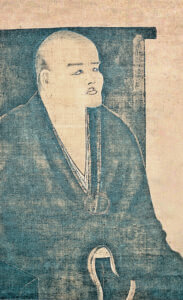

This is part of a series of articles on the arc of Zen thought, practice, and history, as presented in The Circle of the Way: A Concise History of Zen from the Buddha to the Modern World. You can start at the beginning of this series or simply explore from here.
Dogen, from the cover of Essential Dogen.
Explore Zen Buddhism: A Reader's Guide to the Great Works
Overview
Chan in China
- The Works of the Chan and Zen Patriarchs
- The Works of Zen in the Tang Dynasty (618-907)
- The Works of Zen in the Song Dynasty (960 - 1279)
- The Great Koan Collections
Zen in Korea
Zen in Japan
> Dogen: A Guide to His Works
- Rinzai Zen
- Hakuin Ekaku: A Reader's Guide
- The Samurai and Zen
- Zen in Japan up to the Meiji Restoration
Additional Resources
- The Heart Sutra: A Reader’s Guide
- Zen in the Modern World (Coming Soon)
- Foundational Sutras and Texts of Zen (Coming Soon)
- Zen and Tea
Dogen (1200–1253) is revered as the founder of the Soto school in Japan, and his influence cannot be overstated. And as mentioned in the previous article, everything changed with him.
The Circle of the Waygives an excellent overview:
Dogen’s oeuvre would be a remarkable achievement just as literature, for its lyric beauty, or as philosophy, for its presentation of Buddhist teachings. But Dogen’s Zen is the Zen of practice, and its deepest value is found in its illumination of the unity of practice and enlightenment.
Shambhala Publications has multiple works by and on Dogen: translations, commentaries, and later commentaries on his output.
Dogen: Japan’s Original Zen Teacher
Although Dogen’s writings have reached wide prominence among contemporary Buddhists and philosophers, there is much that remains enigmatic about his life and writings. In Dogen: Japan’s Original Zen Teacher, respected Dogen scholar and translator Steven Heine offers a nuanced portrait of the master’s historical context, life, and literary output, paying special attention to issues such as:
- The nature of the “great doubt” that motivated Dogen’s religious quest
- The sociopolitical turmoil of Kamakura Japan that led to dynamic innovations in medieval Japanese Buddhism
- The challenges and transformations Dogen experienced during his pivotal time in China
- Key inflection points and unresolved questions regarding Dogen’s teaching career in Japan
- Ongoing controversies in the scholarly interpretations of Dogen’s biography and teachings
Synthesizing a lifetime of research and reflection into an accessible narrative, this new addition to the Lives of the Masters series illuminates thought-provoking perspectives on Dogen’s character and teachings, as well as his relevance to contemporary practitioners.
The Essential Dogen: Writings of the Great Zen Master
This is an excellent place to start: the first book to offer the great master’s incisive wisdom in short selections taken from the whole range of his voluminous works. The pithy and powerful readings, arranged according to theme, provide a perfect introduction to Dogen—and inspire spiritual practice in people of all traditions.
Beyond Thinking: A Guide to Zen Meditation
Kaz Tanahashi translated and edited this collection of Dogen's works on zazen meditation along with Mel Weitsman, Blanche Hartman, Michael Wenger, Norman Fischer, Katherine Thanas, Reb Anderson, and others.
It has many fasciles from the Shōbō Genzō as well as some others including:
- ‘‘Recommending Zazen to All People’’, the ‘‘Fukanzazengi," one of the most revered texts in the Soto School, as it summarizes Dogen’s intention for establishing the Zen teaching in Japan.
- ‘‘On the Endeavor of the Way," or ‘‘Bendowa.’’ highly revered in the Soto School, as it is the most comprehensive elucidation of dharma throughout Dogen’s teaching career.
Rational Zen: The Mind of Dogen Zenji
Rational Zen consists of selections from both the Shobogenzo, Dogen's masterwork which you will read about more below, and the Eihei Koroku, or Universal Book of Eternal Peace which until now has been unavailable in English. The translator Thomas Cleary also provides explanations of the inner meanings of Dogen's writings and sayings—the first commentaries of their kind of English. A compendium of authentic source materials further enhances the reader's insight into Dogen's methods, linking them to the great classical traditions of Buddhism that ultimately flowered in Zen.
The Eihei Koroku mentioned above is comprised of instructions to his monks, informal talks, and the famous Instructions to the Cook or Tenzo Kyokun.
The Tenzo Kyokun, Instructions to the Cook
The Circle of the Way gives an excellent overview of Instructions to the cook, the Tenzo Kyokun, which he wrote in 1237:
While Dogen was still living on the docked ship—it seems he had nowhere else to go—an elderly monk from Ayuwang Monastery, where Dahui Zonggao once taught, boarded in search of Japanese mushrooms. Dogen offered him some tea. The old man talked about his life as a monk and his position as cook at Ayuwang. He had walked thirty-four or thirty-five li (about ten miles), he said, hoping to find Japanese mushrooms—a delicacy—to put into a noodle soup.
The conversations he had with this cook became a formative teaching for Dogen.
The work, The Circle of the Way continues,
is literally a job description for a temple cook. . . . Dogen described cooking as a sacred activity. He advised the cook to handle pots and spoons with reverence and treat each grain of rice with as much care and attention as if it were his own eyeball. “Taking up a vegetable leaf manifests the Buddha’s sixteen-foot golden body,” he wrote. "Take up the sixteen-foot golden body and reveal it as a vegetable leaf. This is the power of functioning freely as the awakening activity which benefits all beings."
How to Cook Your Life: From the Zen Kitchen to Enlightenment
This is a translation of this text, along with a commentary by the Kyoto-based Soto priest Kosho Uchiyama Roshi (1912–1998).
In drawing parallels between preparing meals for the Zen monastery and spiritual training, he reveals far more than simply the rules and manners of the Zen kitchen; he teaches us how to "cook," or refine our lives. In this volume, Uchiyama Roshi undertakes the task of elucidating Dogen's text for the benefit of modern-day readers of Zen. Taken together, his translation and commentary truly constitute a "cookbook for life," one that shows us how to live with an unbiased mind in the midst of our workaday world.
Instructions to the Cook: A Zen Master's Lessons in Living a Life that Matters
An even more contemporary take on this work is Instructions to the Cook: A Zen Master's Lessons in Living a Life That Matters from Bernie Glassman and Rick Fields.
Instructions to the Cook describes the innovative business model Roshi Bernie Glassman developed to revitalize a poverty-stricken section of Yonkers, New York. Using his own story as a base, Glassman shows how social engagement can be used as a spiritual practice to promote both personal and societal transformation.
The Shōbō Genzō: The Treasury of the True Dharma Eye
Undoubtedly Dogen's magnum opus, this a collection of sermons he gave over many years on a wide range of subjects. The works below include the full translation, works that are commentaries on sections of it, or anthologies that include parts of it.
Note that there are several other titles with "Shōbō Genzō" but which are distinct works. The main work discussed in this section is sometimes differentiated from the others by calling it Kana Shōbō Genzō.
Treasury of the True Dharma Eye: Zen Master Dogen's Shobo Genzo
Dogen's collection of essays that form the Treasury of the True Dharma Eye (Shōbō Genzō, in Japanese) is a monumental work, considered to be one of the profoundest expressions of Zen wisdom ever put on paper, and also the most outstanding literary and philosophical work of Japan. Kazuaki Tanahashi and a team of translators that represent a Who’s Who of American Zen have produced a translation of the great work that combines accuracy with a deep understanding of Dogen’s voice and literary gifts.
This volume includes a wealth of materials to aid understanding, including maps, lineage charts, a bibliography, and an exhaustive glossary of names and terms—and, as a bonus, the most renowned of all Dogen’s essays, “Recommending Zazen to All People.”
"A vast, beautiful translation of the master work of the Japanese genius Dogen Zenji. English-speaking practitioners will be indebted to Kaz Tanahashi and his associates for this truly magnificent teaching, an indispensable contribution to Zen letters." —Peter Matthiessen (Muryo Roshi)
"A deeply considered and deeply relevant text. Shambhala’s publication of Kazuaki Tanahashi’s translation of the complete text of Eihei Dogen’s Shōbō Genzō marks a watershed moment for Western Buddhism. With the Tanahashi version, it appears we now have an edition that will receive the sort of attention this great work deserves. Tanahashi’s effort to preserve the particular Japanese difficulty of Dogen’s poetic prose, aided by the excellent work of the poet and Zen teacher Peter Levitt, emphasizes the text’s ambiguity, multiplicity, and resonance of meaning more effectively than other versions." —Norman Fischer, Tricycle
Each Moment Is the Universe: Zen and the Way of Being Time
It's easy to regard time as a commodity—we even speak of “saving” or “spending” it. We often regard it as an enemy, when we feel it slipping away before we’re ready for time to be up. The Zen view of time is radically different than that: time is not something separate from our life; rather, our life is time. Understand this, says Dainin Katagiri Roshi, and you can live fully and freely right where you are in each moment.
Katagiri bases his teaching on Being Time, a text that is part of the Shōbō Genzō to show that time is a creative, dynamic process that continuously produces the universe and everything in it—and that to understand this is to discover a gateway to freedom from the dissatisfactions of everyday life. He guides us in contemplating impermanence, the present moment, and the ungraspable nature of past and future. He discusses time as part of our inner being, made manifest through constant change in ourselves and our surroundings. And these ideas are by no means metaphysical abstractions: they can be directly perceived by any of us through meditation.
Several of the essays of the Shōbō Genzō are the subject of standalone books.
Flowers Fall: A Commentary on Zen Master Dogen's Genjokoan
The Genjokoan, or Actualizing the Fundamental Point, is often considered to be the key text within Dogen's masterwork, Shōbō Genzō. The Genjokoan addresses in terse and poetic language many of the perennial concerns of Zen, focusing particularly on the relationship between practice and realization.
Enlightenment Unfolds: The Essential Teachings of Zen Master Dogen
Enlightenment Unfolds presents many of the incisive and inspiring writings of this seminal figure, focusing on essays from his great life work, Treasury of the True Dharma Eye, as well as poems, talks, and correspondence. As the editor of this volume, Kaz Tanahashi, describes it,
We present this selection of Dogen’s writings in chronological order. We hope the texts in this book illustrate Dogen as a whole person—not only as a seeker, traveler, teacher, and priest who brought Zen from China to Japan, but as a poet, thinker, scholar, administrator, and woodcarver. The text consists of formal and informal talks, essays, monastic rules, journals, poems, and notes, including Dogen’s words as recorded by his disciples. Some were originally written in Chinese, others in Japanese.
Tanahashi has brought together his own translations of Dogen with those of some of the most respected Zen teachers and writers of our own day, including Reb Anderson, Susan Moon, Edward Espe Brown, Norman Fischer, Gil Fronsdal, Blanche Hartman, Jane Hirschfield, Taigen Dan Leighton, Alan Senauke, Katherine Thanas, Mel Weitzman, and Michael Wenger.
Returning to Silence: Zen Practice in Everyday Life
In this book, Dainin Katagiri points to the manifestation of enlightenment right here, right now, in our everyday routine. Genuineness of practice lies in "just living" our lives wholeheartedly. The Zen practice of sitting meditation (zazen) is not a means to an end but is the activity of enlightenment itself. That is why Katagiri Roshi says, "Don't expect enlightenment—just sit down!"
Based on the author's talks to his American students, Returning to Silence contains the basic teachings of the Buddha, with special emphasis on the meaning of faith and on meditation. It also offers a commentary on "The Bodhisattva's Four Methods of Guidance" from Dogen Zenji's Shōbō Genzō, which speaks in depth about the appropriate actions of those who guide others in the practice of the Buddha Way. Throughout these pages, Katagiri Roshi energetically brings to life the message that "Buddha is your daily life."
The Other Shōbō Genzōs
There are two more volumes that include "Shōbō Genzō" in the title. One is the Shōbō Genzō Zuimonki which was writeen by Dogen's student Ejo. The other is the Mana Shobogenzo, sometimes also called the Shinji Shobogenzo, which is a collection of koans. Both these works are profiled below.
Record of Things Heard: From the Treasury of the Eye of the True Teaching, Ejo's Shobogenzo Zuimonki
This Zen classic is a collection of talks Dogen, the founder of the Soto School. They were recorded by Ejo, one of Dogen's first disciples, and later his foremost successor. The talks and stories in this volume were written in the thirteenth-century Japan, a time when Buddhism was undergoing a "dark age" of misinterpretation and corruption. It was in this atmosphere that Dogen attempted to reassert the true essence of the Buddhist teachings and to affirm "the mind of the Way" and the doctrine of selflessness. Dogen emphasizes the disciplinary aspect of Zen: meditation practice is presented here as the backbone without which Buddhism could not exist.
The stories in this volume are often humorous and paradoxical, relating the Buddhist teachings by means of example. Commonly in the Zen tradition, discussions between teacher and student and the telling of tales are used to point to a greater truth, which mere theory could never explain.
Dogen relates interesting stories of his travels in China, where the inspiration he found lacking in Japanese Buddhism was flourishing in the Ch'an school of Chinese Buddhism.
To confuse things a bit, there are several other texts with Shōbō Genzō in their title which are in fact separate works.
The True Dharma Eye: Zen Master Dogen's Three Hundred Koans
This presents readers with a uniquely contemporary perspective on his profound teachings and their relevance for modern Western practitioners of Zen. Following the traditional format for koan collections, John Daido Loori has added his own commentary and accompanying verse for each of Dogen’s koans. Zen students and scholars will find The True Dharma Eye to be a source of deep insight into the mind of one of the world’s greatest religious thinkers, as well as the practice of koan study itself.
Other Works
Here are a few other works by or focusing on Dogen.
Minding Mind: A Course in Basic Meditation
Among the seven meditation manuals included here is A Generally Recommended Mode of Sitting Meditation by Dogen.
One of the main concerns of Dogen’s teaching activity was to alert people to the shortcomings and dangers of incomplete Zen meditation and partial Zen experience. This manual, one of Dogen’s first written works, reflects this concern and outlines an approach to its resolution.
Another manual in this collection is Absorption in the Treasury of Light, written by Dogen's main student, Ejo (1198–1282). Born into an ancient noble family, Ejo became a Buddhist monk at the age of eighteen. After studying Tendai Buddhism, he concentrated on Pure Land Buddhism, then turned to Zen. Eventually he became an apprentice of Zen master Dogen, who soon appointed Ejo his teaching assistant and spiritual successor.
Absorption in the Treasury of Light is Ejo’s own composition. Reflecting Ejo’s background in the esoteric branch of Tendai Buddhism as well as his classical Zen studies, this work shows how to focus on the so-called Dharmakaya, or Reality Body teaching of Buddhism, underlying a wide variety of symbolic expressions. This type of meditation, using scriptural extracts, poetry, and Zen koans, or teaching stories, to register a specific level of consciousness, is called sanzen. There is a great deal of Zen literature deriving from centuries of sanzen, among which Ejo’s Absorption in the Treasury of Light represents a very unusual blend of complexity and simplicity, depth and accessibility.
Being Upright: Zen Meditation and the Bodhisattva Precepts
Dogen authored the Kyojukaimon, or Essay on Teaching and Conferring the Precepts. Being Upright is a short commentary by Reb Anderson on this text which is very important in the Soto Zen lineage and is recited as part of the monthly confession ceremony at the San Francisco Zen Center and its sister centers.
This is the teaching of unsurpassed complete perfect awakening,
and the path of practicing and being practiced.
—Dogen, Essay on Teaching and Conferring the Precepts
Continue to the next article in the series: Rinzai Zen >
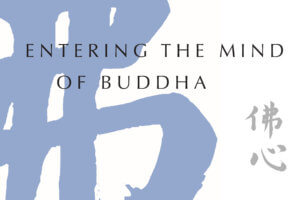
Radiant Presence
An excerpt from Entering the Mind of Buddha
Buddhas are sitting in the midst of fierce flames, turning the wheel of dharma. A ring of fire surrounds every buddha’s meditation seat. Buddhas sit at the center of the suffering of all beings, and they have developed the capacity to be open to boundless suffering. This capacity is the perfection of patience. These flames give off heat and light. They represent both the burning heat of suffering and the opportunity for spiritual illumination. We too sit at the center of all flames of suffering. The inexhaustible expressions of impatience are included in the flames of suffering, in the endless ways of turning away or touching the flames. Turning away, we freeze; touching, we burn.
Impatience takes many forms, including anger, hate, rage, contempt, aggression, disgust, nausea, rejection, aversion, ill will, and violence. The third heroic practice offers us the opportunity to develop the capacity of the buddhas and bodhisattvas to be open and to listen to all the cries of the world. This is how we are practicing together with all buddhas and how they are practicing together with us.
Patience involves learning to be present and upright with all our experiences without turning away or touching. It is our capacity to accept how things really are, and it is necessary for buddha’s wisdom. Developing the capacity to tolerate relative truths warms us up to tolerate ultimate truth.
In our ordinary experience we are challenged with all kinds of hardships, pains, and insults. These challenges offer us many opportunities to practice patience moment by moment. This is the experience we call samsara. It is the world of cyclic birth and death, which is suffering. The experience of samsara lives together with another experience called nirvana, which is peace and freedom. In nirvana there is no birth and no death. In the mature and wholehearted practice of patience in the midst of birth and death, we realize that birth and death and nirvana are one and the same.
Perfecting Patience in the Ocean of Living Beings
As bodhisattvas, we live our life by vows and acts of compassion in the ocean of living beings. In this way, bodhisattvas walk the path of the buddhas. Bodhisattvas learn to be patient and present with the pleasure they may feel when they appear to be skillful or when they get something they think they want. Bodhisattvas also learn to be patient and present with the pain that comes when they are unskillful or when they get something they don’t think they want. To live our lives on the path of the buddhas, we have to let go of our fears of personal suffering and of not being in control of our lives. Otherwise, fear will undermine the bodhisattva life of vow and compassionate action. Fear doesn’t stop us completely, but sometimes it stops us temporarily. We sometimes slip away from acts of compassion into acts that are not generous, ethical, or patient because fear distracts us from our vow to be compassionate.
It is possible to become so concentrated that we enter into an excellent, pleasant place where there is no painful sensation. Buddhist sutras describe certain heavens and states of meditative attainment where there is no discomfort. It is hard to train in patience in those blissful states. Fortunately or unfortunately, those states do not last. If we haven’t trained in forbearance, when we leave those pleasant states and experience pain or insult we can easily lose patience; we might become violent, aggressive, harsh, or just plain crabby.
When we carefully pay attention to our actions of body, speech, and mind through the practice of ethics, we begin to see whether we are patient or not.
In the first paramita, the practice of giving, we focus on welcoming what comes to us and making our practice a gift. In the second paramita, the practice of ethics, we give our attention to being upright and ethical in our actions of body, speech, and mind. These two practices support us now in the practice of becoming patient with the imperfections and discomforts that we experience in our life, including frustration at our own lack of skillfulness. Practicing patience, in turn, deepens our ability to generously offer others the gift of fearlessness.
When we carefully pay attention to our actions of body, speech, and mind through the practice of ethics, we begin to see whether we are patient or not. In one of my earlier books, Being Upright, I wrote this in a discussion about the precept of not harboring ill will: “Patience is an antidote to anger and the primary condition for enlightenment. Through patience your vision clears, and you see the dependent co-arising of pain, frustration, and anger. When you practice patience, the path of harmful anger is blocked. You can face pain and relax and breathe with it.”
Patience is being present with our experience. It’s not turning away or touching. When we can be present with heat and cold, tiredness and sleepiness, or with people attacking us, we develop our capacity to also be present with the emptiness of phenomena. If we are patient, we don’t move toward emptiness, and we don’t turn away from it. We don’t try to control ourselves to prevent turning toward or turning away from anything. This is the activity of generosity functioning within patience. Patience, in turn, protects our generous heart when insults and afflictions come upon us.
Sometimes people confuse patience with self-control. Someone told me that when he feels something unpleasant, he wants to try to control his reaction to it. Sometimes he thinks he is protecting others from his anger in that moment. However, I do not recommend attempting to control ourselves or others. If we think it is a good idea to control ourselves, we may also think it would be a good idea to try to control others. This is not the practice of patience. I recommend instead that, when we find ourselves attempting to control our feelings of fear, anger, or frustration, we remember our wish to be generous, ethical, and patient in our dealings with ourselves and with others. Instead of attempting to control ourselves or others, we return to our aspiration to express an appropriate and compassionate response. Trying to control people and situations is stressful and draining. Being aware of our energy level may help us to notice when our care slips into trying to control. Patient compassion is not draining.
The Three Aspects of Patience
Buddhas teach that patience has three aspects: patience with hardship, patience with harm or insults from sentient beings, and patience with the non-arising of phenomena.
Patience with Hardship
Sometimes it is hard to be upright in the present, in the place where we are, without leaning a little bit away from this place, and without leaning a little bit into thoughts about the past or dreams about the future. When pain comes, sometimes we think, “I can’t take this any longer” or “How long is this going to go on?” When our lives, our relationships, or our jobs seem boring, we often go looking for something more interesting. We try to go away from the present moment when hardship comes in the form of pain or boredom.
Even when we are in pleasant situations, we sometimes lean into imagining pleasure in the future and miss our life in the present. When my daughter was a little girl, she had a friend whose parents were separated. This friend, also a little girl, traveled from Oakland to Boston and Boston to Oakland to be with each of her parents. She had trouble with the hardship of her parents being separated. She said, “When I am with my dad and I’m going to go back to my mom, I am so excited to see my mom that I don’t pay attention to my dad. And when I’m with my mom and I’m going to go see my dad, I get so excited about seeing my dad that I don’t pay attention to my mom.” She understood the sadness of loving her dad and loving her mom and not being fully with either one of them, and she articulated this so well.
This little girl described how it felt by telling another story. She imagined really wanting a Cabbage Patch doll for Christmas, and actually receiving a Cabbage Patch doll. But then somehow the doll gets mixed in with wrapping paper and the whole bundle gets thrown out. Looking for the doll, she can’t find it. Where’s the doll? Maybe it got thrown out with the wrapping paper! So she runs down to the garbage and sees the garbage truck driving away with the Cabbage Patch doll on the roof of the truck. She said that when they find really nice stuff in the garbage, sometimes they put it on the roof of the garbage truck. So she imagined running outside and seeing the thing that she treasured being taken away because she wasn’t really present when she received it. She was so excited opening her presents that she buried the Cabbage Patch doll in all the wrappings, and so she lost it. This little girl could see that what she was doing with her parents was just like that. She actually came up with that example.
It is said that we cannot make a buddha without patience, and we cannot fully practice patience without encountering suffering. Suffering is required to make a buddha. But when we are in pain, we can practice with the smallest possible dose of it. There is a place for pain medication, and there is a friendly way to deal with pain without trying to kill it, control it, or distract ourselves from it. Some of us might say, “I will never be able to do that,” which is a way of saying we think that maybe we can’t become a buddha. It is true that if we cannot become that patient, we cannot become a buddha. But the buddhas’ teachings say that if we practice this way, and keep on practicing, we will become so patient that eventually we will be able to stand anything without feeling ill will toward anybody. If we can be that patient, we can become buddha. In the meantime, we can practice patience and be on the path to buddhahood.
Patience matures and is perfected by being present with our discomfort in the smallest units of time and space.
In the past, during interviews with students, I have sat so long that I have gone beyond my capacity for patience with discomfort. My lack of patience with my own physical pain has sometimes fostered a lack of patience with others. I don’t push myself beyond my endurance anymore, and that helps me be more patient with others.
Patience matures and is perfected by being present with our discomfort in the smallest units of time and space. It is helpful when we try to be present and gracious in each moment of pain, to be with the most present part of the present—that is, to be in the smallest unit of “now.” To be in the present with pain, and to be focused and undistracted in that moment, is patience. We can be really tolerant of pain that way. Through the practice of patience, we can bring our warm heart to each present moment. We can welcome pain and pleasure and insult and praise in each moment.
It is sad when we don’t fully participate in our life. When we feel how sad that is, that sadness is ethics working in us. It’s repentance. This kind of regret encourages us to be more attentive and to return to the practice of patience. When we are trying to generously give ourselves, we can check to see whether we are present. And if we are not present, we may notice that we feel sorrow. Our sorrow says, “At the next meeting, I want to give myself and be fully present.” If we are not present next time, again we feel sorrow. And again, we say, “I wish to be present.” Eventually, when we train in patience, we learn to sit in our seat right in the middle of our life.
Patience with Harm or Insult from Sentient Beings
This is an old story from the Jataka Tales, which are stories told about the Buddha-to-be during his many past lives on the long path to buddhahood. In this story, the Buddha-to-be was called Kshantivadin. Kshanti is a Sanskrit word for patience. The etymology of the word refers to capacity—having capacity, for example, for pain. Kshantivadin means someone who is on the path of patience.
One day a king came with a large retinue into the forest where the yogi Kshantivadin lived, and the monarch and his courtiers had a party there. After the party, the king fell asleep, and his concubines wandered off. They discovered Kshantivadin sitting in a forest glade, and the yogi gave them some teachings about the practice of patience. As he did that, he was also patient with the pleasure of the situation and patient with the beautiful ladies.
When the king awoke, he found the yogi with his concubines, and he felt that Kshantivadin had robbed him. The king became very angry. The concubines begged him, “Please, don’t be angry with this yogi. We thought you were asleep and didn’t need us.” But the king did not listen to them, and he said to Kshantivadin, “What’s your practice, false yogi?” The yogi replied, “My practice is patience.” The king said, “Oh yeah?” and chopped off Kshantivadin’s hands. Then the king said, “Now what is your practice?” Again Kshantivadin responded by saying, “My practice is patience.” Then Kshantivadin provoked the king a little by adding, “You are trying to test my patience but you don’t know where to find it.” The king demanded, “Where is it?” The yogi said, “It’s deep within me.” So the king continued to cut him. Each time, he said, “What’s your practice now?” And the yogi replied calmly, “My practice is patience, but you do not know where my patience lies.” Finally the king stormed, “Where does your patience lie?” Kshantivadin said, “Deep within my heart.” Then the king kicked him and walked away.
Sometimes, people we love and who also love us might do something that hurts us, physically or emotionally. We might be patient with them and not have any ill will toward them, even as we ask them to stop hurting us.
At the time of this story in India, yogis were respected as persons who had great power. The king’s general was afraid that the yogi would use his power to hurt the king, so the general went to the yogi and begged him, “It’s all right if you get angry at the king, but please, do not destroy him.” Kshantivadin replied, “I am not angry. I am not going to hurt him. I only wish the king well.” In the story, Kshantivadin had no ill will for the king who mistreated him. Kshantivadin could have said, “I am not a false yogi. I am not a false practitioner of patience. I am practicing patience, and that is why I do not have ill will toward you or toward the king. No matter what is done to me, I will not have ill will toward anybody.” In this story, Kshantivadin is amazingly, super-humanly, super-divinely patient with insult and physical assault. He did not feel ill will toward the one who administered many insults and abuses. Kshantivadin was able to receive these difficult gifts from the king and to be present with the situation.
I sometimes wonder if somebody cut me up whether I would be able to be patient and generous with that person. We may wonder if we want to be as patient as Kshantivadin was. Being a grandparent is nice, because it’s possible to imagine that if one of your grandchildren accidentally chopped off your fingers, you might be patient and not have ill will toward them. Sometimes, people we love and who also love us might do something that hurts us, physically or emotionally. We might be patient with them and not have any ill will toward them, even as we ask them to stop hurting us.
In the chapter on giving, I told a story of offering my grandson a boundary when he pinched me. The boundary was my gift to him, but it was also part of my practice of patience. Because I was practicing patience with my own discomfort at that time, my asking him to stop was a gift to him. Otherwise, it would most likely have been an attempt to control him. When we are patient with our own pain, we are better able give a boundary or say “no” as a gift, rather than saying “no” out of reactivity or fear.
We may experience insult and disapproval physically in a particular part of our body. When we feel pain in a specific place in our body, we can learn to be present with that sensation. I find that the sensation of pain in my body is a being that is calling for compassionate presence. When I give my compassionate presence to that being who is calling for it there is healing and peace with the pain. We can do this with many different types of pain in different parts of our body. When we do, we are taking care of the pain-filled being in us who is calling for patience.
One of the stories that drew me to Zen was about how one of our Zen ancestors responded to both insult and praise. In this story, Hakuin Zenji was falsely accused of impregnating a young girl who lived in the village near his hermitage. When her parents and the villagers came to accuse him, he said merely, “Is that so?” When the baby was born, Hakuin received the infant and cared for the child with the help of a wet nurse. Sometime later, the girl confessed to her parents that a village boy was the father of her child. Those who had accused him earlier came then to reclaim the child and to praise Hakuin. In response to their praise, he simply said, again, “Is that so?”
Hakuin was patient when they blamed him, and he was patient when they praised him. The story does not say that he did not care that they blamed or praised him. It also does not say that he didn’t feel anything. If it said that he didn’t feel anything, it would make the story much less interesting to me. In this story, Hakuin Zenji was patient with others, he was patient with his feelings when he was blamed, and he was patient with his feelings when he was praised.
Big insults can sometimes be easier to welcome than little ones. Sometimes people find it quite natural to be patient and accepting of the big shocks that come to their lives because they see that trying to control those situations is useless. Sometimes it’s easier to be present with huge shocks because we can see that complaining is a distraction from being patient with our pain. We may be able to say, “I’ve been practicing in preparation for this big one my whole life and here it is. I’m ready to meet this.”
But when little insults come, we may think being patient is not necessary and that complaining is appropriate and will get us what we want. I might say, “I don’t need this. This is ridiculous.” In a way, this is insulting the insult. Sometimes the insults where we forget our practice of patience are very small. For example, if we call a helpline and think that the person who answers should be helpful and we also think that they are not, we may feel justified in being impatient and rude to them. Part of what makes this a difficult situation is that we had an expectation. Being patient with small insults and frustrations in our relationships is at the heart of the practice of patience. In order to have continuity in our practice, we need to be ready to meet both the big and the small frustrations with patience.
Patience with the Non-Arising of Phenomena
Practicing patience with the suffering that arises from hardship and insult is in itself of great benefit to oneself and others. Perhaps its greatest benefit is that it makes us ready for the third kind of patience. It is hard to open to all these forms of suffering in the world of birth and death, but it is even more difficult to open to the ultimate truth of all things.
The Great Perfect Wisdom Heart Sutra says, “All phenomena are marked by emptiness. They neither arise nor cease.” Seeing that they neither arise nor cease is seeing how all phenomena are marked by emptiness. Patient acceptance of the non-arising and non-ceasing of phenomena is a capacity of mature bodhisattvas and buddhas. It is the capacity to open to the ultimate truth of emptiness.
How can we open to the revelation of the ultimate truth of emptiness? It is by opening to the truth of our intimate relationship with all beings. The Lotus Sutra says in chapter 2 that only a buddha together with a buddha can fully realize the truth of all things. This intimate face-to-face transmission of buddha together with buddha is possible when bodhisattvas develop the capacity to be patient with intimacy. Patient acceptance of ultimate truth is the same as patient acceptance of the intimacy of all things.
Share
